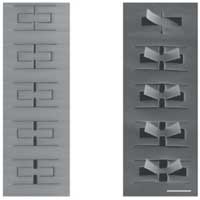 Engineers are using ideas taken from paper-folding practices to create a sophisticated alternative to 3D printing.
Engineers are using ideas taken from paper-folding practices to create a sophisticated alternative to 3D printing.
Tuesday, December 22, 2020
Japanese art technique can be used to create 3D microstructures and nanotools
 Engineers are using ideas taken from paper-folding practices to create a sophisticated alternative to 3D printing.
Engineers are using ideas taken from paper-folding practices to create a sophisticated alternative to 3D printing.
New electron microscopy technique offers first look at previously hidden processes
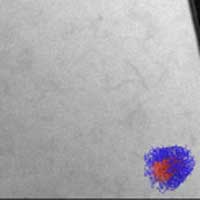 Researchers can now fill in missing information about nanoscale polymerization and 'smart' materials for medicine and the environment.
Researchers can now fill in missing information about nanoscale polymerization and 'smart' materials for medicine and the environment.
Chemists synthesize 'flat' silicon compounds
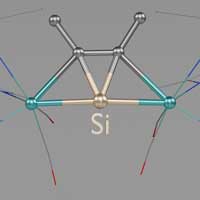 Chemists have synthesized extremely unusual compounds. Their central building block is a silicon atom. Different from usual, however, is the arrangement of the four bonding partners of the atom, which are not in the form of a tetrahedron around it, but flat like a trapezoid.
Chemists have synthesized extremely unusual compounds. Their central building block is a silicon atom. Different from usual, however, is the arrangement of the four bonding partners of the atom, which are not in the form of a tetrahedron around it, but flat like a trapezoid.
New imaging method views soil carbon at near-atomic scales
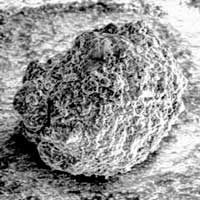 A new study describes a breakthrough method for imaging the physical and chemical interactions that sequester carbon in soil at near atomic scales, with some surprising results.
A new study describes a breakthrough method for imaging the physical and chemical interactions that sequester carbon in soil at near atomic scales, with some surprising results.
'Soft' nanoparticles give plasmons new potential
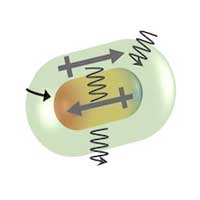 Scientists show how coated nanoantennas retain energy to potentially catalyze chemical reactions.
Scientists show how coated nanoantennas retain energy to potentially catalyze chemical reactions.
A 10-second COVID-19 antibody test with 3D-printed high-performance sensors
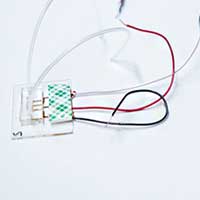 Researchers have developed one of the fastest known COVID-19 antibody tests. The test results are available in 10 to 15 seconds and detect the presence of two of the antibodies to SARS-CoV-2, the virus responsible for COVID-19.
Researchers have developed one of the fastest known COVID-19 antibody tests. The test results are available in 10 to 15 seconds and detect the presence of two of the antibodies to SARS-CoV-2, the virus responsible for COVID-19.
BioAFMviewer software for simulated atomic force microscopy of biomolecules
 The newly developed BioAFMviewer software opens the opportunity to use the enormous amount of available high-resolution protein data to better understand experiments. Within an interactive interface with rich functionality, the BioAFMviewer computationally emulates tip-scanning of any biomolecular structure to generate simulated AFM graphics and movies.
The newly developed BioAFMviewer software opens the opportunity to use the enormous amount of available high-resolution protein data to better understand experiments. Within an interactive interface with rich functionality, the BioAFMviewer computationally emulates tip-scanning of any biomolecular structure to generate simulated AFM graphics and movies.
Novel glue is activated by a magnetic field
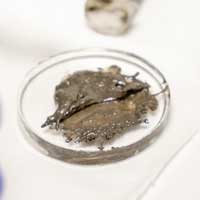 The new 'magnetocuring' adhesive is made by combining a typical commercially available epoxy adhesive with specially tailored magnetic nanoparticles.
The new 'magnetocuring' adhesive is made by combining a typical commercially available epoxy adhesive with specially tailored magnetic nanoparticles.
Transforming self-assembled architectures into functional materials
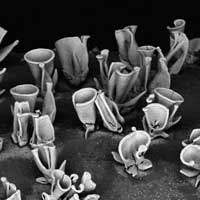 Researchers discovered shape-preserving ion-exchange reactions that open up new routes towards self-assembled materials with various novel, functional properties.
Researchers discovered shape-preserving ion-exchange reactions that open up new routes towards self-assembled materials with various novel, functional properties.
Subscribe to:
Comments (Atom)
